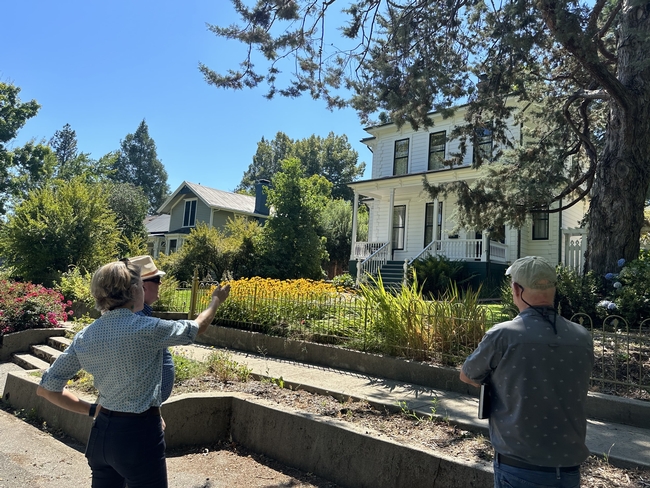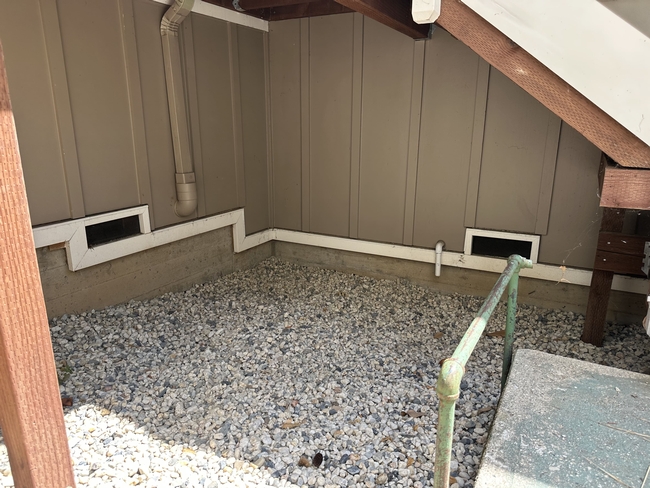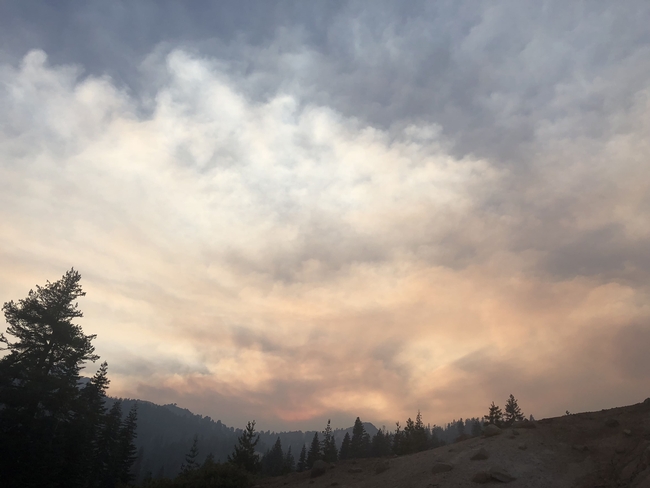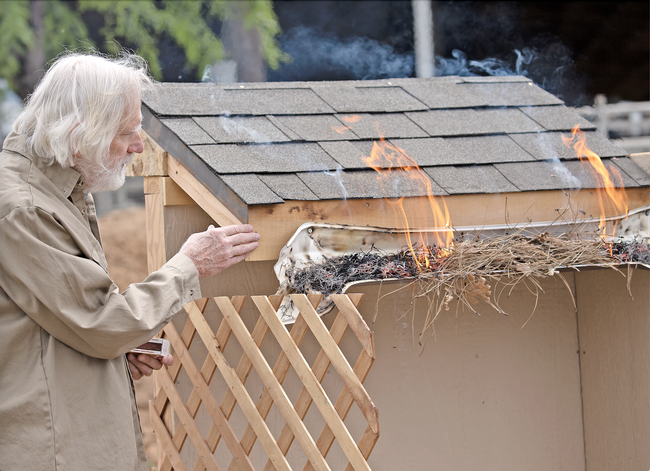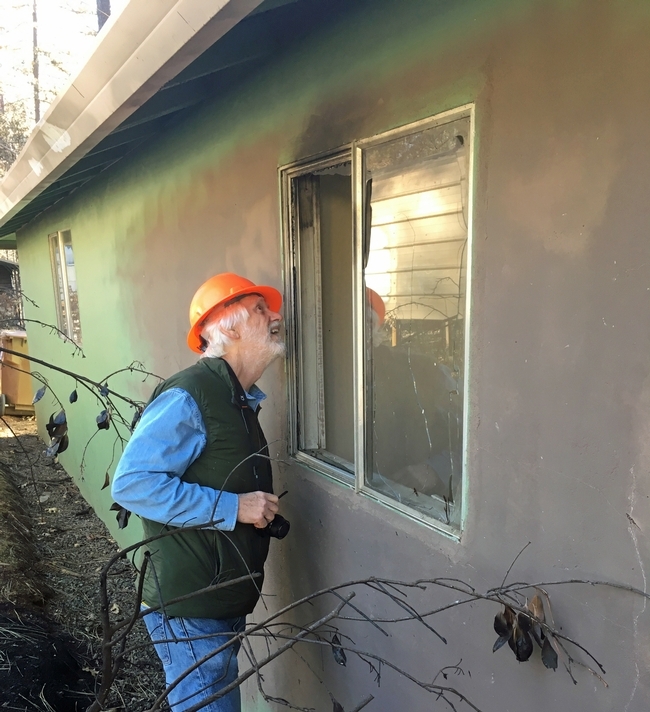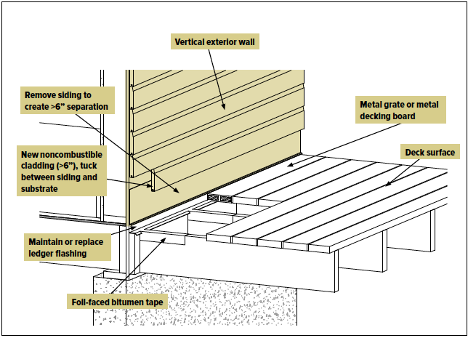
Posts Tagged: home
Simple tasks make big difference in preparing for wildfire, smoke
UC ANR Fire Network compiles expert advice on preparedness, evacuation tasks
The explosive growth of the Park Fire in Northern California was fueled by recent, intense heat waves and extremely dry vegetation – conditions seen at many locations across the state.
Given the potential for wildfire and smoke impacts during what is expected to be a protracted “fire season,” California residents should think ahead and complete emergency preparations: https://ucanr.edu/sites/fire/Preparedness/.
“If you are concerned that you or someone you know could be affected by fire or smoke, now is the time to take simple steps to prepare,” said Yana Valachovic, University of California Cooperative Extension forest advisor for Humboldt and Del Norte counties.
Valachovic and other members of the UC Agriculture and Natural Resources Fire Network are urging community members to tackle small but significant tasks to minimize potential fire damage. Many of these tasks can be finished in a weekend, such as:
- Clean debris from your roof and gutters.
- Inspect the area around your home and nearby structures and remove all combustibles (dead grass, plants, woody mulch, stored wood, etc.) in the first 5 feet, including under decks and stairs.
- Inspect the foundation, under-eave, and gable-end vents for holes and damage; add a layer of finer metal-mesh screens (1/8” mesh) to the vents to prevent ember penetration.
- Inspect the garage door bottom seal to make sure embers can't blow under the door.
- Replace the first 5 feet of wooden fences that attach to buildings with a noncombustible panel or gate.
A recently published report, “Retrofitting a Home for Wildfire Resistance,” also can help residents prioritize the measures that are most cost-effective and fit their budget.
Six things to do, six hours before evacuation
As evacuation warnings are issued for local communities, there are six important things to do in advance of an actual evacuation order, according to Valachovic:
- Close windows, pet doors and skylights.
- Move inside patio cushions, brooms and door mats; tie open wooden gates that attach to the house or deck to prevent a fire from traveling from the fence to the house.
- Relocate the barbecue propane tank away from home.
- Stage buckets of water and garden hoses in visible locations.
- Dress for evacuation: cotton clothes, sturdy shoes, hat and face protection and leather gloves.
- Put your “go bag” in your vehicle.
The UC ANR Fire Network website also includes downloadable checklists – in English and Spanish – for your go bag (https://ucanr.edu/sites/fire/Safety/Evacuation/Preparing_a_Go-Bag/) and for a host of important pre-evacuation tasks for your household, property, pets and livestock (https://ucanr.edu/sites/fire/Safety/Evacuation/).
“We want communities to be wildfire-prepared – not scared,” Valachovic emphasized.
Smoke exposure a significant public health concern
Hazardous smoke can blanket wide swaths of California – and much of the Western U.S. – during ongoing wildfire events. A primer on harmful health effects, a list of tips for reducing smoke exposure, and other resources and links can be found on the UC ANR Fire Network site: https://ucanr.edu/sites/fire/Safety/Air_Quality_and_Smoke/.
“If there's smoke in the forecast for the next few days, I would keep an eye on my local air quality at fire.airnow.gov,” said Katie Low, statewide coordinator for UC ANR's Fire Network. “And if the AQI – Air Quality Index – is high, I would limit my outdoor activity, wear an N95 mask if I do go outside, and run my air purifier.”
For instructions on making a DIY air cleaner, creating a “clean air space” in your home and fitting an N95 mask properly, visit the California Air Resources Board's “Smoke Ready California” page: https://ww2.arb.ca.gov/smokereadyca.
Another useful tool is the crowd-sourced #FireMappers fire activity map – powered by the National Alliance for Public Safety GIS Foundation, GISCorps, and CEDR Digital Corps – accessible through the UC ANR Fire Network site: https://ucanr.edu/sites/fire/Safety/Current/.
Report: Making homes more resistant to wildfire can be affordable
Priorities include removing objects within five feet of a house, upgrading vents
Wildfire losses cost taxpayers and communities hundreds of billions of dollars each year, and preparing communities before a disaster occurs is the best way to avoid damage to homes and neighborhoods. Retrofitting existing homes can make communities safer while avoiding billions in disaster costs.
As Californians learn to live with wildfire, scientists encourage improving the structure and design of houses and other buildings to help them survive wildfire. A new report shows that even inexpensive changes can increase wildfire resistance.
“Retrofitting a Home for Wildfire Resistance” suggests that some of the most effective strategies to reduce the vulnerability of homes and neighborhoods to wildfire can be done affordably.
“This report is a practical tool that helps evaluate the relative costs and benefits of fire-hardening retrofits,” said Yana Valachovic, a University of California Cooperative Extension forest advisor, who reviewed the study. “These retrofits can substantially improve the odds that a home or building will withstand wildfire exposures to embers, radiant heat or flame contact.”
The report is co-authored by Kimiko Barrett, wildfire research and policy analyst for Headwaters Economics, a non-partisan research organization based in Bozeman, Montana, and Stephen L. Quarles, UC Cooperative Extension advisor emeritus, who has studied the vulnerability of the built environment to wildfire exposures and potential mitigation strategies.
In partnership with California's Department of Forestry and Fire Protection, or CAL FIRE, Barrett and Quarles examined the costs for improving the structure and design of existing homes to increase their wildfire resistance.
“This tool can also help homeowners build a budget and prioritize tasks that often feel overwhelming,” Valachovic said. “Everyone should prioritize removing combustible vegetation, mulch, and stored materials within the first five feet of a structure and upgrading vents to resist embers.”
Simple actions can reduce a home's vulnerability to wildfire
The report's conclusions are derived from a detailed examination of the latest available science on mitigation strategies and construction costs. The authors identified costs for retrofitting structures to meet and exceed California's building code (Chapter 7A) for wildfire resistance, but the general principles and conclusions can be applied in other states, adjusting for local economic and supply conditions.
For a typical 2,000-square-foot home in California, retrofitting costs can range from $2,000 to upwards of $100,000 for the highest level of protection.
“When we looked at the latest building techniques and cost data, we found some effective retrofitting strategies can be done for between $2,000 to $10,000,” said Barrett. “While the highest level of protection can cost more, it is often not necessary. Simple actions such as removing flammable materials from near the home and removing debris from the roof can be done at little to no cost.”
The authors also incorporated effective mitigation strategies that could reduce risk without requiring costly upgrades over the entire home, such as replacing siding only on the side of a home that is close to another building, such as neighbor's home or a detached garage, or replacing combustible deck boards next to the home with a noncombustible deck board or metal grate.
They also incorporated a systems approach, where the vulnerability of adjacent components are considered, and recommend steps such as placing noncombustible surfaces at the intersection between two components.
For example, Quarles said: “Adding a gutter cover and ensuring the adjacent edge of roof is not vulnerable by incorporating a metal drip edge and, if necessary, a noncombustible bird stop at the edge of the roof. Or, replacing a combustible deck board next to the house and, if necessary, adding metal flashing at the base of the exterior wall.”
Cost estimates in the report include those for upgrading a home's exterior walls, roof, deck, windows, doors, eaves, gutters and near-home landscaping – all areas likely to be exposed to embers, direct flames and radiant heat.
“The graphics detailing specific elements of the retrofitting process are very useful,” Valachovic said.
Charts, architectural renderings and a detailed appendix of cost estimates provide a basis for a general understanding of the methods and budgets that homeowners might consider when retrofitting their home for wildfire resistance.
Retrofitting for wildfire can make communities safer
Contractors and others seeking information about building wildfire-resistant homes can gain valuable insights from this analysis, along with retrofit costs generated by the California Wildfire Mitigation Program.
“This analysis demonstrates that investing in wildfire-resistant retrofitting for homes is a cost-effective strategy to protect communities that could save billions in disaster costs,” said Barrett. “As more people live in fire-prone areas, we must also take a closer look at retrofitting homes to be stronger and more durable.”
While the authors hope Californians use the information to protect their homes, people who work in construction, development, design and policy also can use the information to show that retrofitting homes for wildfire resistance is an effective way to protect communities.
This 58-page report received funding from CAL FIRE and the U.S. Forest Service and can be downloaded for free at https://headwaterseconomics.org/wp-content/uploads/2024/06/Wildfire_Retrofit_Report_20240624.pdf.
Can I Use Vinegar to Control Weeds?
Acetic acid, also known as vinegar, is used in products for weed control. Many people choose it...
What are exotic and invasive pests?
Exotic and invasive pests threaten California's natural environments, agricultural production,...
Urban Pesticides, Fertilizers, and Water Quality
Pesticides and fertilizers applied around homes, residential or commercial landscapes, school...

